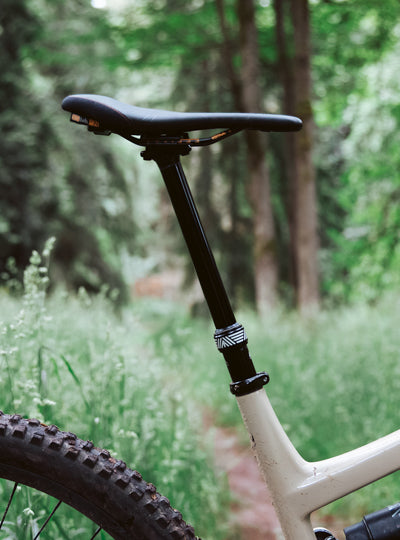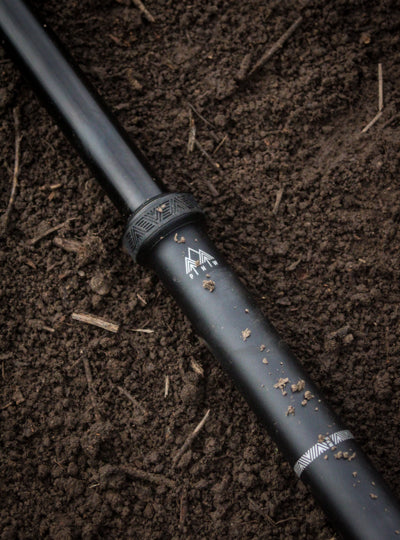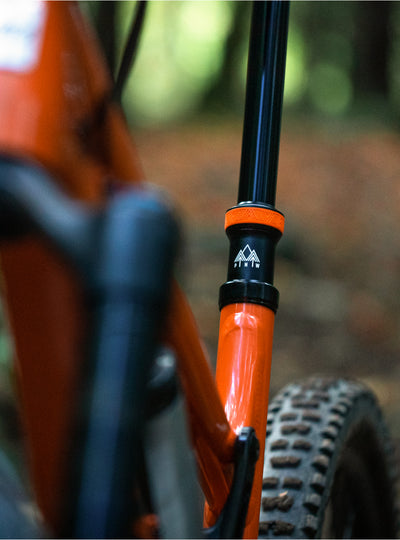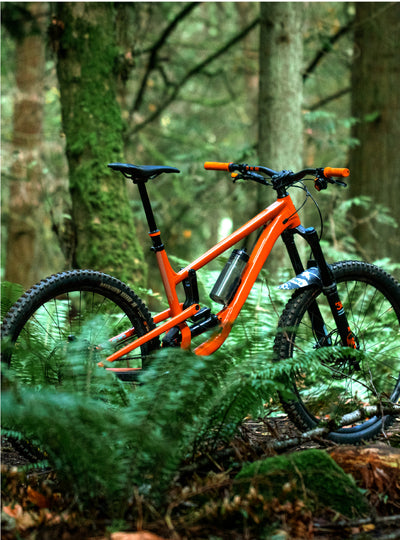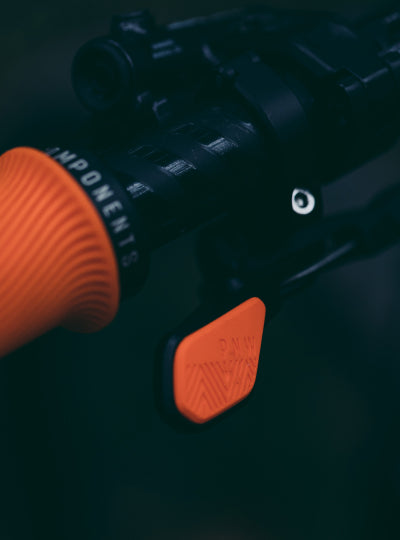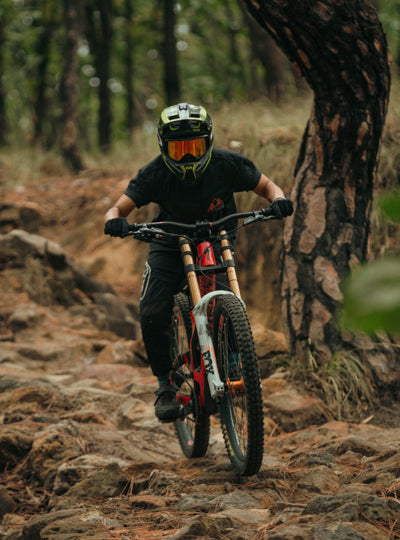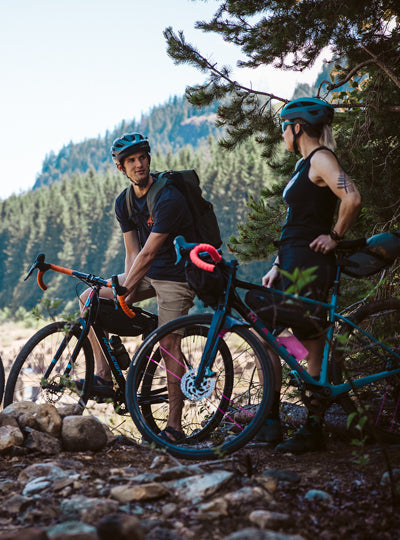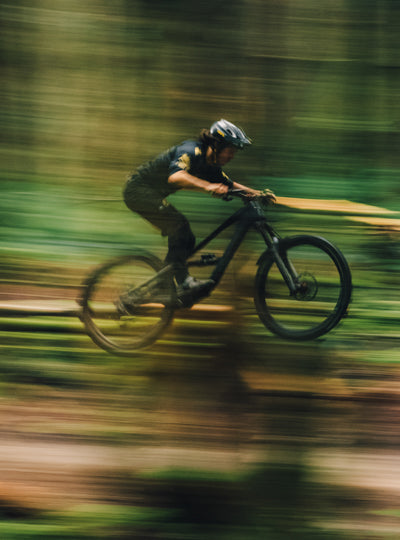We've said it before, and we'll say it plenty of times in the future: We love reviews of our products. Not only do they help us understand where we can make improvements in the future, but they help you decide whether or not you want to upgrade your bike with one of our components. We could tell you that our products are the best in the business, but we'd rather you have an unbiased source of information to aid you in your journey to assemble the world's best bike. If you're in the market for a new dropper and are considering our 3rd Gen. Rainier, be sure to read on to see if it's the right dropper for you and your wheeled steed.
NSMB Reviews the 3rd Gen. Rainier Dropper Post
PNW brings a lot of value to my bike with this third-generation dropper post for $179 (USD). Full stop. It's a dropper post. It comes down and stays down. It comes up and stays up. It stops anywhere in the middle. Perfect. I wrote three different fully flourishing intros to this review, because in my mind the Rainier deserves one, and then junked them all because there isn't a single thing about the 3rd Gen. Rainier to get really stoked about. It just works, really well, for a comparatively little amount of money.
It's not the smoothest, it's not the shortest for any travel category, it's not the cheapest good dropper post, it's not the flashiest, it's not the most interesting, and it doesn't have the longest warranty. But, if I'm dropping cash on a dropper post tomorrow, I think there's a strong argument that the PNW Rainier is the most min-maxed dropper in the business.

First off, the folks at PNW have a solid reputation for quality products and even higher quality customer support that I don't think can be understated. They offer a three-year warranty on this Wintek-cartridge post and I would be surprised if an issue did come up if anyone will touch their turn-around time on resolving issues. That's certainly one way to differentiate a product and I think there's a lot of value buried in PNW's honest desire to get their customers back riding ASAP.
In terms of the Rainier post itself, I've generally had great luck with Wintek gas-cartridge-equipped dropper posts and the Rainier is no exception. It moves very smoothly, and fast enough (but certainly not fast), and it's beyond simple to take apart to clean-and-lube or replace a cartridge when the time comes.
The Features List
What does $179 USD ($240 CAD) buy me? First off, the Rainer is now available in all three popular mountain bike post diameters including 30.9, 31.6, and the ever more prevalent 34.9. Each size is available in four max-travel options - 125mm, 150mm, 170mm, & 200mm - and each option can then be adjusted down up to 30mm in 5mm increments with no tools required.
A couple of giraffes I know have called this travel-adjust feature superfluous. I say they have obviously never had the experience of measuring saddle stack heights to try and help a rider maximize their drop v. leg length or tire clearance. For some riders, the difference between 165mm of drop and 170mm will make their bike fit. The overall lengths, and above seal head stack, aren't the shortest in the business - OneUp owns both crowns - but the numbers are solid with this 170mm travel post showing 224mm from the seat collar to saddle rails and a total length of 493mm.
As I noted in my teardown with Jeff, the new Wintek version of the Rainier doesn't require any bizarre cable measuring voodoo. It's about as plug and play as any dropper post gets other than still requiring the little cable-head receiver at the seat post actuator. Personally, I'd love to see the actuator pre-shaped to accept a cable head because I always seem to drop the little barrel when I'm working on them. PNW is not alone in requiring this extra little widget so that's a fairly universal entry on my wish list.
Otherwise I haven't touched the Rainier since it was installed, other than to swap remotes around in the name of science, and that in itself is, I think, the best feature. Performance is such that the post just disappears when I'm riding and I think that's the life goal for any dropper post.

PNW sells the post sans remote and gives the option of purchasing their budget Puget Lever ($49 USD) their excellent Loam Lever ($69 USD) or any one of their gravel-roadie options at a discounted price. The ultimate min-maxing-move is to hit up friends for whatever dropper post remotes they have lying about from past uppy-downy experiences and trade them for beer or coffee. It saves them from having to relieve awful memories and the Rainier post is happy getting friendly with every remote I've tried. For a few bucks more I think the Loam Lever is a worthwhile investment but I understand trying to stretch those dollars when choosing a 'game-changer.'
Juneuary and Julyuary rain! The start of our summer was wet-wet-wet and it was just the other day the slightly slower than normal Rainier told me it would like a bit of Slickoleum under the seal head. It's a sub-one-minute, tool-free, job including finding the grease. I like to service my own stuff and time is of the essence so I think this is an important feature. When it comes time to swap a cartridge, install new seals and keyways, and fully clean & lube the post it will seriously take longer to remove it from my bike than to do the work. That's a win.

Rainier Games
Personally, I've found my dropper post sweet spot to be at 150-170mm on all bikes. I used to be solidly in the 150mm camp but it's amazing how once I was used to riding a 170mm post there started to be situations where 150mm just felt too short. For me 200mm posts drop decidedly too far. Would 180mm be better than 170mm? I guess I'd have to try lowering a 200mm Rainier to find out, but I have to say that 170mm is about perfect. I ran the Rainier at 160mm and 155mm to play with the adjustment setting. My legs are long enough that it's not a feature I'd need on any modern size large bike. I certainly don't need an infinitely adjustable post - all the way up and all the way down are the only two settings I generally use - and I could see riders in the same boat playing with the adjustable travel feature to find their perfect point for fully-dropped.
As mentioned, the Rainier isn't quick, but it's plenty fast for me and I'm guessing most riders. If you like to feel a cold rush of air as your seat comes within millimeters of your bits there are much faster options on the market.

Faultless for less. The real question here is two-fold. If I owned a Rainier would I buy something else? No. Even if money was no object I can't think of any reason I'd replace a 3rd Gen. Rainier. If I was in the market for a dropper post would I buy the Rainier over other posts? There are some great options on the market that don't use Wintek guts - including PNW's excellent Bachelor post - but the combination of price, reliability, and ease of service of a cartridge post is hard to argue against. The Highline 7 from Crankbrothers uses a fancier Wintek cartridge and is excellent but at a significant premium over the Rainier.
With specific product goals in mind like weight, speed, or absolute smoothness I can absolutely make strong arguments for other posts. If I just want something that supports me - up, down, and in between - for the longterm with minimal fuss, maximum support, minimal cost, and maximum customer service then I don't see how I can beat this option comparing SRP prices.
Performance, quality, and impressive customer service per dollar check. Check out the current top value in dropper posts at PNW.
If you have questions about the 3rd Gen. Rainier, or any of our products, please reach out to our Customer Service team via email at info@pnwcomponents.com.




